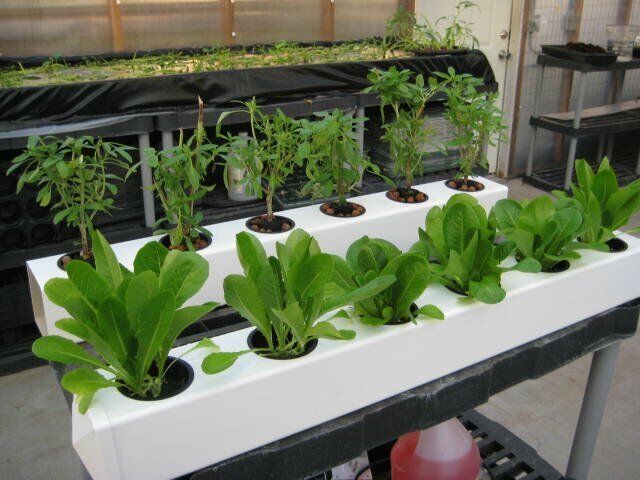|

It is no secret that commercial growers have been using hydroponic tools and equipment for indoor gardening for years. Like other businesses, these farmers need to generate revenue and provide a product to customers year-round. What if you want to become more self-sufficient during the COVID-19 lock-down? What about the average person that wants to do it on a smaller scale? The good news is that you can. Let’s look at what you need to get started.
Light for Photosynthesis
Dictionary.com defines photosynthesis thus, “the complex process by which carbon dioxide, water, and certain inorganic salts are converted into carbohydrates by green plants, algae, and certain bacteria, using energy from the sun and chlorophyll.”
Yeah, yeah, yeah; what you really need to know is that your plants need light to grow. Of course, sunlight is optimal; it provides the full spectrum of visible and non-visible light. It’s offered to us for free and is the best way to provide light for hydroponics. Many vegetable plants and herbs like mint and basil do best on at least six hours of direct light each day. Southern-facing windows and greenhouses have the potential to provide this amount of sunlight.
But what if that’s not in the cards? You’ll be best investing in grow lights. Look for ones from 4,000 to 6,000 kelvin to insure that they deliver both cool (blue) and warm (red) light.
Substitute Substrate for Soil
This is where the hydro part comes in. The water and nutrients circulate through the substrate which is a material such as pea gravel, sand, coconut fiber, peat moss, expanded clay pellets, etc.
Water
Clean water is critical. The water of choice is treated by reverse osmosis (RO). This purification process results in water that is 98% to 99% pure and your plants will thank you for it. You will also have to keep an eye on the water pH (a measure of alkalinity or acidity. For example, if you are growing tomatoes, they prefer a pH of 6.0 to 6.8 on a scale where 7.0 is considered neutral. Mint plants prefer 6.5 to 7.5. Growing beets? Shoot for 6.0 to 6.8. Knowing these numbers is important as you consider companion plants for your garden.
As far as fertilizer goes, you’ll want to buy a hydroponic premix because it will contain all the nutrients needed. I suppose you could cobble together your own but the expense/work ratio doesn’t make sense to me. Of course, it wouldn’t hurt to add foliar feeding every couple of weeks.
Types of Hydroponic Systems
As you might suspect, there is a range of systems to choose from.
- Water culture. Uses a non-submersible air pump, air hose, floating platform, rope wicks, and grow tray.
- Nutrient film. Uses non-submersible air pump, air hose, submersible pump, air stone, overflow tube, and grow tray.
- Wick system. Uses non-submersible pump, air stone, air hose, rope wicks, and grow tray.
- Ebb and flow. Submersible air pump, air hose, timer, overflow tube, and grow tray.
- Aeroponic. Subersible pump, mist nozzles, air hose, and short-cycle timer.
- Drip system. Non-submersible air pump, submersible pump, air hose, timer, drip lines, overflow tube, drip manifold, grow tray.
There are your basic hydroponic tools and equipment for indoor gardening. Whether you approach it as a hobby, as a serious farmer who is going off the grid, there are numerous benefits. The produce will be fresh, as organic as you make it, and available year-round.

Looking for more great content? Visit our partner sites:
I offer article and blog-writing services. Interested? Hire Me!
Did you find this article helpful? Thanks for supporting this free site with a small donation!
Visit Kelly’s profile on Pinterest.
About the Author:
 Kelly R. Smith is an Air Force veteran and was a commercial carpenter for 20 years before returning to night school at the University of Houston where he earned a Bachelor’s Degree in Computer Science. After working at NASA for a few years, he went on to develop software for the transportation, financial, and energy-trading industries. He has been writing, in one capacity or another, since he could hold a pencil. As a freelance writer now, he specializes in producing articles and blog content for a variety of clients. His personal blog is at I Can Fix Up My Home Blog where he muses on many different topics.
Kelly R. Smith is an Air Force veteran and was a commercial carpenter for 20 years before returning to night school at the University of Houston where he earned a Bachelor’s Degree in Computer Science. After working at NASA for a few years, he went on to develop software for the transportation, financial, and energy-trading industries. He has been writing, in one capacity or another, since he could hold a pencil. As a freelance writer now, he specializes in producing articles and blog content for a variety of clients. His personal blog is at I Can Fix Up My Home Blog where he muses on many different topics.




What pH do you recommend for cannabis?
6.9 – 7.2
Reminds me of the show Trailer Park Boys. They had their crops DOWN!